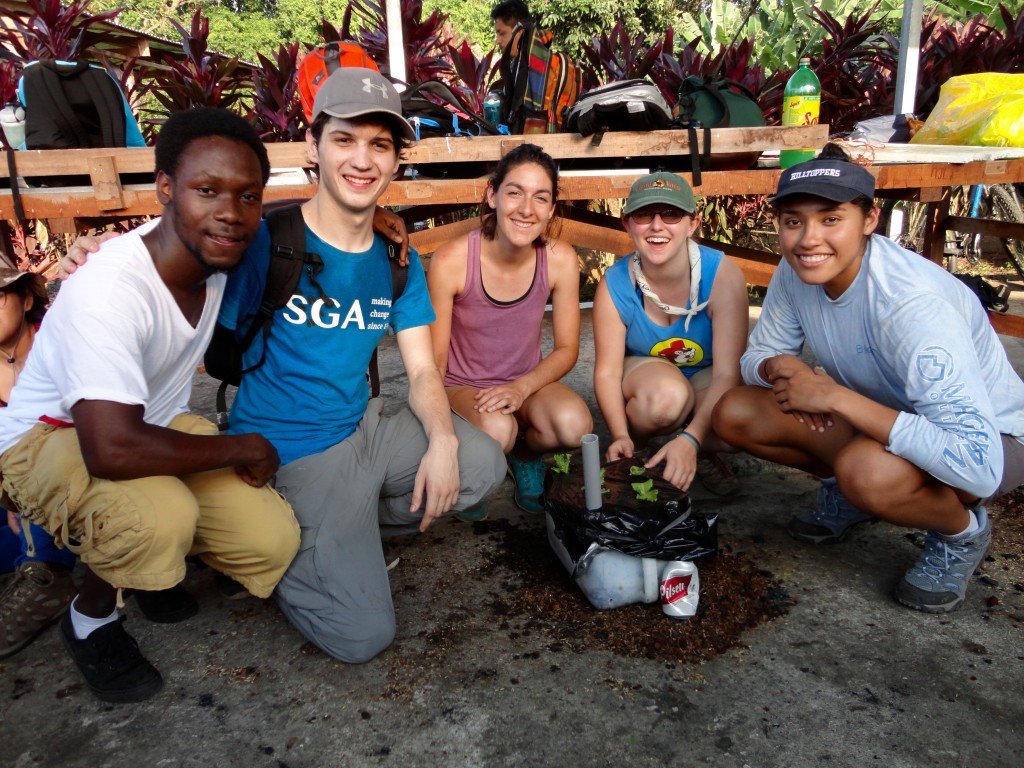“When one tugs at a single thing in nature, he finds it attached to the rest of the world” – John Muir
Costa Rica // May 2016
After a semester of classes, days of preparation, hours of anticipation, and moments of excitement, my week in Costa Rica was far beyond anything I had imagined it would be. We met individuals who embodied the Costa Rican motto of pura vida. We saw landscapes that are incomparable to any other place on the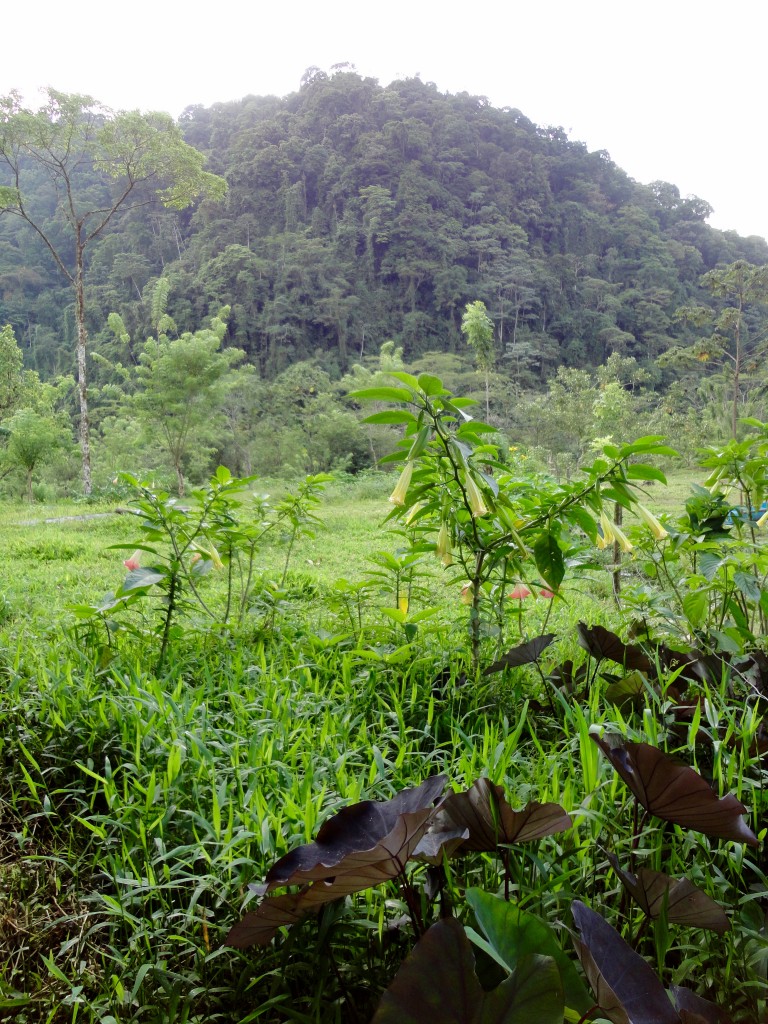 planet. We dove into a culture far different than the one we know at home. Many of these individuals
planet. We dove into a culture far different than the one we know at home. Many of these individuals
strove to teach us about sustainable practices and lead us to environmental awareness, but their words made a lasting impression I cannot shake.
Earth University is a college that specializes in agronomy. Each student there spends four years practicing
sustainable agriculture, implementing their own business models, and preparing for a future that they will
leave a positive impact upon. Hearing from the students at Earth, their hard work and big dreams were unlike those of many of my peers at home. It seemed as though life was looked at through a lens of simplicity. They saw a problem in their community, and they made a plan of
action to solve that problem. Why is this so hard for us to do in our own community? As Americans, we are luckier than we choose to understand. We have access to a wealth of resources and opportunities. Yet, we squelch the potential of many of those opportunities through our lack of action. Earth University demonstrated to me the importance of developing solutions. There is no excuse for a lack of effort; we can no longer sit idly and wait for someone else to come up with answers to the problems of our society. It’s up to us, today, before our generation misses its chance to make a difference.
During our visit at Earth, we helped build a greenhouse at a local community farm. While touring the property, we stumbled upon a biodigester behind the house. The biodigerster works to capture methane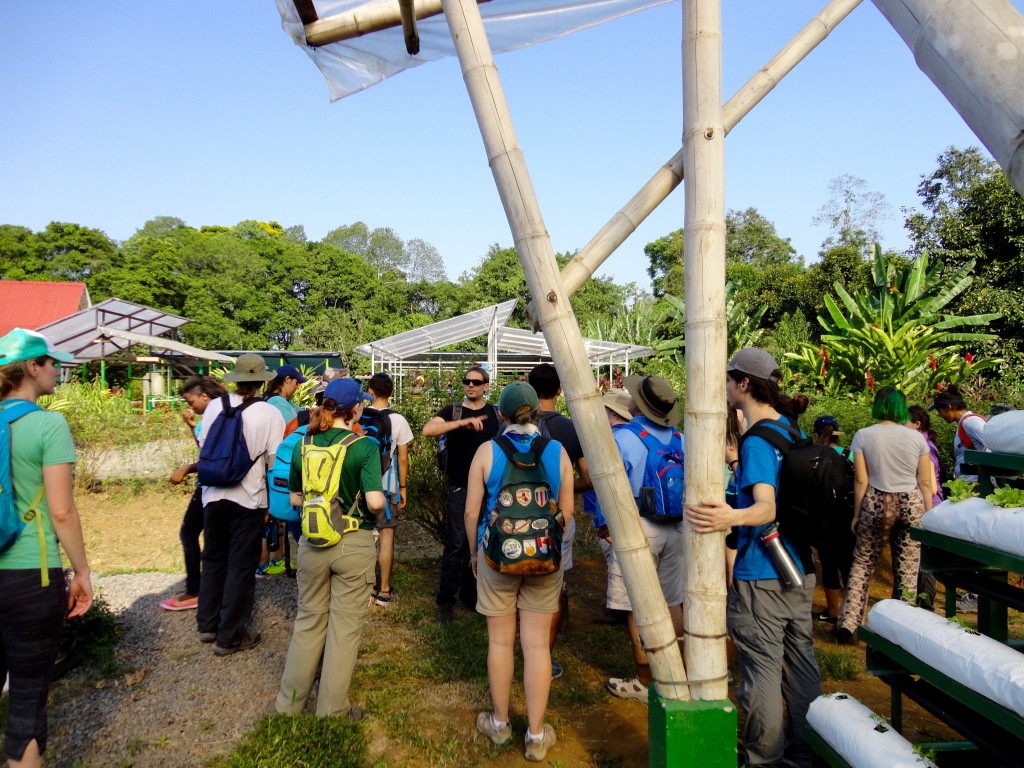 and other greenhouse gases released from animal waste. This particular system captured biogases and pumped them back into the kitchen to be used as fuel for the stove. What an incredible way to cut down on emissions! Amazed and curious, it got me wondering why this practice was not more widely broadcasted or applied in the United States.
and other greenhouse gases released from animal waste. This particular system captured biogases and pumped them back into the kitchen to be used as fuel for the stove. What an incredible way to cut down on emissions! Amazed and curious, it got me wondering why this practice was not more widely broadcasted or applied in the United States.
Perhaps agricultural practice do not advertise biodigersts due to a lack of efficiency. However, a study conducted by Flesch et al. determined that fugitive emissions – gas emissions escaping the biodigester system – are minimal. They also concluded that the emission is dependent upon the flaring and upkeep of individual systems[1]. Biodigester systems are effective at capturing greenhouse gas emissions and cutting back on different energy sources for heat. Smith et al. explores the economic feasibility of biodigesters in rural communities. This article evaluates the costs of installation, access to transportable fuel, and value of time in effort to access the potential benefits of biodigester installations. Unfortunately, the cost of these factors adds up to a non-feasible cost to economically poor, rural farming communities[2]. Despite the expensive cost of installation, Cambodia is furthering their efforts to establish biogas as a market product. The National Biodigester Program strives to establish a bio-gas financial sector that is self-supporting and permanent. Cambodia has a need for such a resource, as many of their communities are farm-dependent and rural. Currently, much of their fuel comes from solids, such as wood. While the demand has the
potential to be high, there is current difficulty in establishing such a market. The consumers lack the resources for repair services and installation; meanwhile, the program itself lacks overall funding. Cambodia has a high potential for success in a biogas market, yet the factors against its success are difficult to ignore[3]. The financial investment necessary for a household to install a biodigester is more than most can afford. While the sustainability and cut back on fuel is appealing, it is not always a solution for every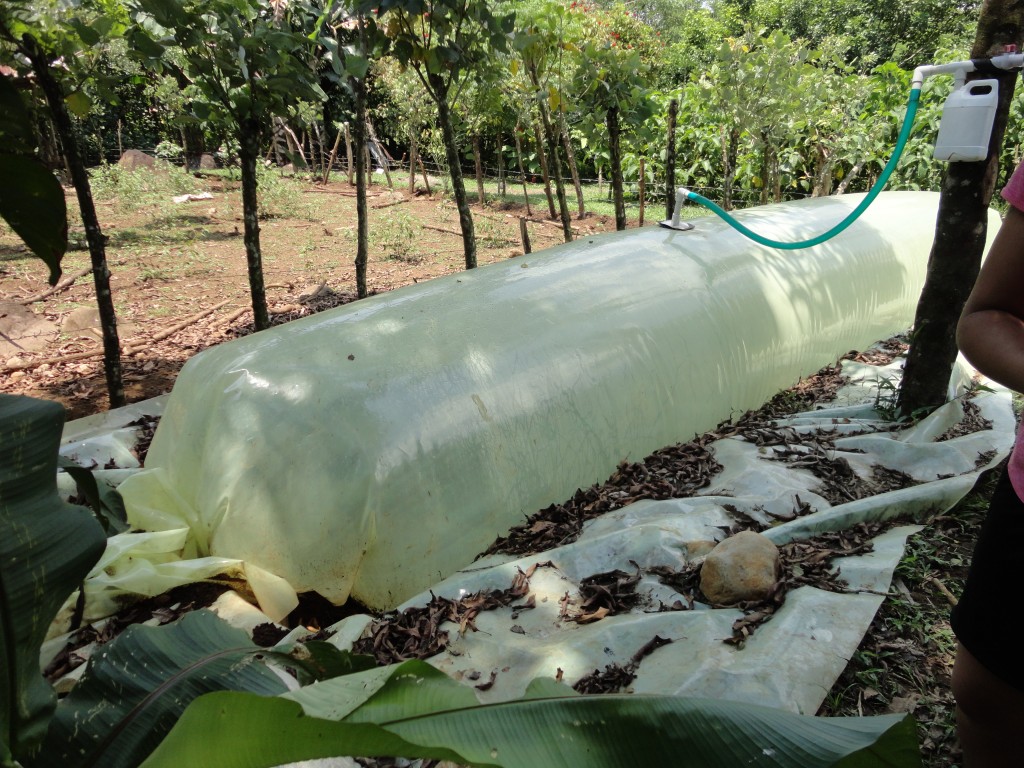 community. Alternatively, duckweed ponds are another resource to cutback on the emission released from animal agriculture. These aquatic systems take in the greenhouse gases emitted from swine farming, further aiding in the reduction of animal waste emissions in a number of rural communities[4].
community. Alternatively, duckweed ponds are another resource to cutback on the emission released from animal agriculture. These aquatic systems take in the greenhouse gases emitted from swine farming, further aiding in the reduction of animal waste emissions in a number of rural communities[4].
Developing, rural communities serve as an example to the United States. These communities are able to use their resources in such as way as to help sustain their immediate environment. There is no room to waste and no need to consume beyond what is necessary. Imagine our own communities if we used only the resources of our immediate surroundings. We’d probably have close to nothing. There is much to be appreciated and admired of the simplicity and beauty of developing communities. With cost being the main factor deterring consumers from investing in a biodigester system, American communities are more likely to afford this investment. The many individuals involved in the agricultural industry have something to learn from rural communities. Biodigesters offer a renewable source of fuel and a chance to reuse biomass to produce nutrient rich fertilizer. These systems have the financial appeal for which agricultural industries are look as well as the potential to cut back on harmful greenhouse gas emissions.
♻︎ ♻︎ ♻︎
Early in the week we made our way to La Selva Biological Station. This educational facility sits tucked away in the low land rainforest, surrounded by a plethora of different species just waiting to be discovered and observed. We had the opportunity to meet and listen to the station’s director, Dr. Carlos de la Rosa. He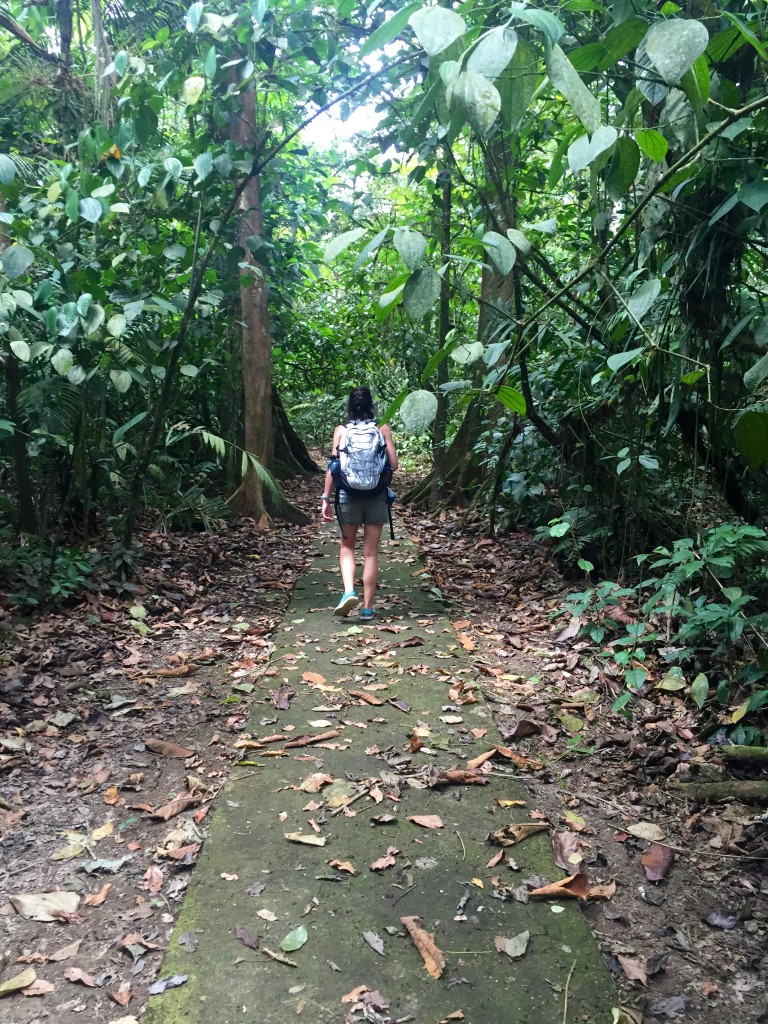 gave us an overview of the many different biological studies conducted at La Selva. Thousands of scientific research papers have been published out of this location. It is thanks to the vast amount of biodiversity within the forest that keeps scientist interested and eager to keep studying.
gave us an overview of the many different biological studies conducted at La Selva. Thousands of scientific research papers have been published out of this location. It is thanks to the vast amount of biodiversity within the forest that keeps scientist interested and eager to keep studying.
After his presentation, we went out into the forest to help conduct research on the tree species in the area. We measured the circumference of the tree trunks, contributing to a study regarding the growth of the trees. It gave us a hands-on experience and left us with a feeling that we helped to contribute to the conservation and understanding of the rainforest. However, it was not until after the study that I truly grasped the importance of the study.
Dr. de la Rosa showed us a comparision of the respiration and photosynthesis of trees. Respiration outputs carbon dioxide as a byproduct of the cellular process of attaining chemical energy. Separately, plants utilize energy provided by light to capture carbon dioxide from the atmosphere in order to produce organic material[5]. The graph shown to us measured carbon dioxide levels from both photosynthesis and respiration against temperature. As temperature increased, the carbon dioxide levels removed through photosynthesis decreased, while the carbon dioxide levels produced by respiration increased. There was a threshold temperature where the processes met, producing a net carbon dioxide amount of zero. Beyond the threshold, the output of carbon dioxide continued to over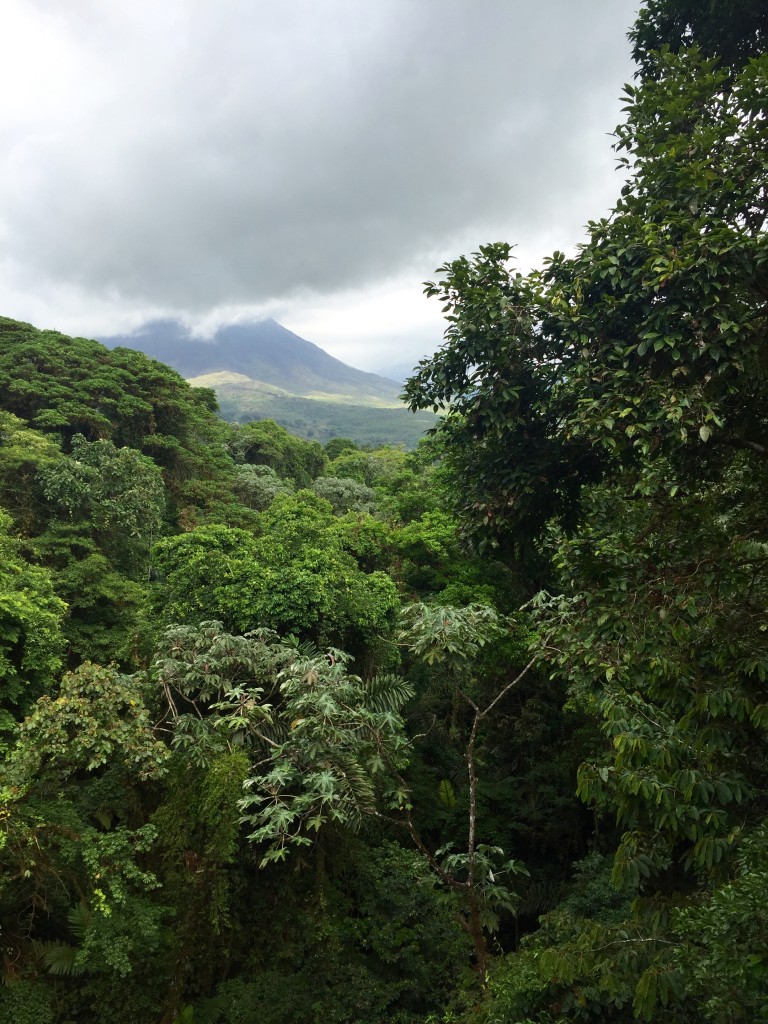 power the intake. Currently, Costa Rica has surpassed the threshold value. This means that the trees growing in areas of higher temperature are not filtering our environment as they had previously. Global warming is ramping up the amount of greenhouse gasses present in the atmosphere. This rate is quickly getting out of hand. Interestingly, a study by Dewar et al. argues that the respiration-photosynthesis ratio is independent of growth temperature[6]. How can a biological study that observed long-term growth inhibition of trees be contradicted by another scientific publishing?
power the intake. Currently, Costa Rica has surpassed the threshold value. This means that the trees growing in areas of higher temperature are not filtering our environment as they had previously. Global warming is ramping up the amount of greenhouse gasses present in the atmosphere. This rate is quickly getting out of hand. Interestingly, a study by Dewar et al. argues that the respiration-photosynthesis ratio is independent of growth temperature[6]. How can a biological study that observed long-term growth inhibition of trees be contradicted by another scientific publishing?
Scientific studies are deemed as the proof behind global warming and climate change. They calculate and measure different values across the globe to illustrate the effects our environments are feeling. What happens when science conflicts? As a chemistry major, this realization serves as a reminder that scientists do not always know the answers. It is important that we accept our shortcomings and failings in research. This is the only way in which we can continue and make new and better discoveries. It is becoming more and more imperative that scientific findings be communicated to the public in a way in which individuals can understand. If people begin to see the value and the credibility of scientific studies, people may begin to understand the severity of the environmental degradation occurring around us. As a scientist, I hope to help the world to understand the earth through my own future research contributions.
Walking away from my week in Costa Rica, a whole conglomerate of emotions is swirling in my head. As I try to digest the many sights and sounds I experienced, I struggle to put into words the appreciation and gratitude I feel toward the individuals I traveled beside and those I met throughout the journey. I would never have begun to understand the insight revealed to me while traveling if not for the people with which I experienced it all. My perspective has been broadened and deepened thanks to this trip. I am walking away with a heart ready to fight for what I believe needs to be changed in this world. I have been given the confidence and the knowledge necessary to take the first steps of being that change. Eco-Lead has altered my course and set me on a path I may otherwise never have found. Taking a good hard look at the reality of the problems around me, I feel more ready than ever to take on my world.
Pura Vida!
References
[1] http://www.sciencedirect.com.ezproxy.stedwards.edu/science/article/pii/S0961953411003333
[2] http://www.sciencedirect.com.ezproxy.stedwards.edu/science/article/pii/S0956053X1300528X
[3] http://www.sciencedirect.com.ezproxy.stedwards.edu/science/article/pii/S0301421513004230
[4] http://web.a.ebscohost.com.ezproxy.stedwards.edu/ehost/detail/detail?sid=c5405e3a-39d3-4598-bd04-ee764e3eb224%40sessionmgr4005&vid=0&hid=4104&bdata=JnNpdGU9ZWhvc3QtbGl2ZSZ zY29wZT1zaXRl#AN=96120864&db=a9h
[5] http://www.hiilipuu.fi/articles/carbon-cycle
[6] http://web.b.ebscohost.com.ezproxy.stedwards.edu/ehost/detail/detail?sid=7dd0988b-028b-4077-bb6f-35d320acb081%40sessionmgr120&vid=0&hid=123&bdata=JnNpdGU9ZWhvc3QtbGl2ZSZzY29w ZT1zaXRl#AN=5608074&db=a9h

